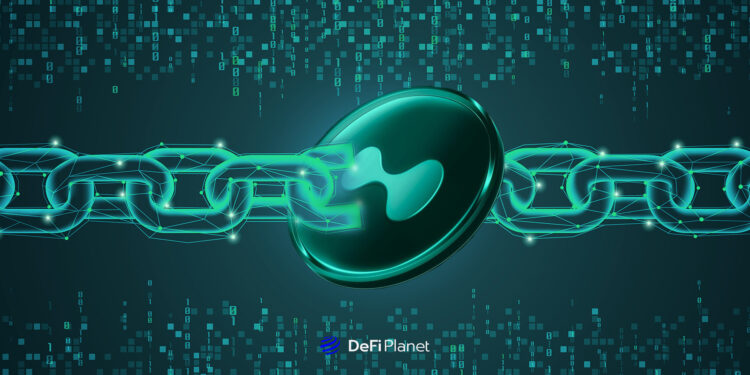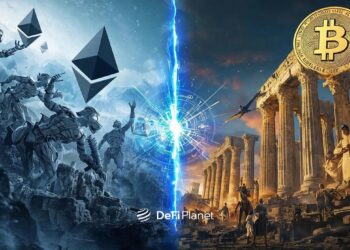Last updated on June 10th, 2025 at 12:21 pm
What if you could combine the speed and sophistication of centralized exchanges (CEXs) with the transparency and user control of decentralized exchanges (DEXs)? That’s the premise behind Hyperliquid, a fully on-chain perpetuals exchange founded by Jeff Yan and Iliensinc, with contributions from alumni of Caltech, MIT, Citadel, and Hudson River Trading.
Hyperliquid markets itself as a new breed of exchange that doesn’t force users to choose between performance and decentralization. It promises real-time trade execution, deep liquidity, and self-custody—all built on a custom Layer 1 blockchain. But in a space crowded with innovation and competition, does Hyperliquid live up to the hype?
Here’s an honest look at what the platform offers and where it still has work to do.
What is Hyperliquid?
Hyperliquid is a high-performance, on-chain trading platform that focuses on perpetual futures contracts. It aims to bridge the gap between the speed and efficiency of CEXs and the trustless design of DEXs.
It supports isolated and cross-margin trading, offers over 100 perpetual pairs, and maintains sub-second block times. Fees are paid in USDC, and there’s no need for MetaMask confirmations on every order. Traders sign once and then interact with the order book like they would on a CEX, but every action is publicly verifiable on-chain.
How Hyperliquid Works
Hyperliquid is built on a custom-made blockchain network that is optimized for trading speed and reliability. This independence gives it complete control over block times, throughput, and architecture— decisions that are critical to delivering the kind of real-time trading experience that derivatives traders demand.

The blockchain uses HyperEVM, an Ethereum-compatible execution layer that allows developers to deploy dApps with familiar tools. It’s secured by HyperBFT, a consensus mechanism that sidesteps Proof-of-Work and Proof-of-Stake models. Instead of mining or staking delays, validators pre-approve transactions for faster throughput.
This setup enables sub-second finality and minimal transaction costs, essential for strategies like high-frequency trading (HFT), which normally can’t operate efficiently on-chain. The developers claim the platform can handle up to 100,000 orders per second.
The exchange features a fully on-chain order book, a rarity in DeFi. Most so-called on-chain perpetual DEXs offload the matching engine to centralized servers or rely on rollups with significant data delays. Hyperliquid processes orders, cancels, and matches on-chain, with near-instant finality and minimal latency—close to what you’d expect from Binance or Bybit, but without the custodial tradeoffs.
It supports isolated and cross-margin trading, offers over 100 perpetual pairs, and maintains sub-second block times. Fees are paid in USDC, and there’s no need for MetaMask confirmations on every order. Traders sign once and then interact with the order book like they would on a CEX, but every action is publicly verifiable on-chain.
After months of speculation, Hyperliquid launched a token, $HYPR, in early 2025. The token plays multiple roles. Users can stake HYPR to participate in governance and unlock trading fee rebates. Validators who secure the network are compensated in HYPR
It is also used in the platform’s points system: Prior to launch, early users earned “Hyperliquidity” points that converted into token allocations, creating strong alignment with power users.
In essence, Hyperliquid aims to be a vertically integrated, performance-maximized blockchain explicitly tailored for one thing: fast, trustless, transparent trading.
What Benefits Does It Bring to the Crypto Trading Ecosystem?
Hyperliquid addresses several pain points that have persisted across both centralized and decentralized platforms.
Performance on Par with Centralized Exchanges
Hyperliquid brings millisecond-level responsiveness and extremely high throughput to on-chain trading. Unlike rollup-based systems that must post data to Ethereum (incurring delays and gas costs), Hyperliquid operates with its own validators and consensus model. The result is a trading experience that feels indistinguishable from a CEX—without sacrificing custody.
This kind of performance opens the door for new strategies, including high-frequency trading (HFT), which previously wasn’t viable on-chain due to latency.
Full On-Chain Transparency
While many platforms claim to be decentralized, Hyperliquid actually enforces it at the architectural level. The full order book is on-chain. Trade history is verifiable. Liquidations, margin, funding rates, and even price oracles are transparently auditable.
This design boosts user trust—a critical asset in a post-FTX world. Traders no longer have to wonder if volumes are inflated, if orders are being front-run, or if platform reserves exist.
Gas-Free Trading and Seamless UX
One major innovation is its gasless user experience. Hyperliquid abstracts away transaction fees so that traders don’t need to worry about holding native tokens for gas. Signing one approval per session allows them to submit dozens of orders in real time without additional wallet prompts.
This dramatically lowers the barrier to entry. Unlike platforms that require bridging, swapping for ETH or MATIC, and frequent re-signing, Hyperliquid feels like a trading-first environment. It’s DeFi that finally works like CeFi.
The Problems It Faces—and the Ones It Might Cause
Despite its impressive strengths, Hyperliquid is not without flaws. In fact, some of its advantages raise longer-term concerns.
Security Model and L1 Trade-offs
Running its own Layer 1 allows Hyperliquid to optimize for speed, but it also comes at the cost of reduced composability with the rest of the Ethereum ecosystem. Unlike protocols that deploy as smart contracts on Ethereum or as rollups, Hyperliquid exists in a silo.
That means it doesn’t benefit from Ethereum’s validator security, shared bridge infrastructure, or direct access to ERC-20 liquidity. Its custom architecture raises questions: How decentralized are its validators? What consensus mechanism is used? And how hardened is it against long-range attacks or censorship?
Without widespread validator participation and clear audits of consensus assumptions, there’s a risk of centralization or exploitation vulnerabilities.
READ MORE: Interoperability and Composability: The New Gold Standard for Blockchain Networks
Liquidity Fragmentation
While Hyperliquid boasts strong native liquidity, it adds to the fragmentation problem in DeFi. The more high-performance chains that launch with proprietary tokens, wallets, and bridging mechanisms, the harder it becomes for traders to move between platforms seamlessly.
Interoperability is still a bottleneck. Hyperliquid does not support standard wallet extensions or token standards. Users must bridge to its L1 and hold USDC in a wrapped format, introducing complexity for casual users and LPs.
This isolation also means that protocols that want to integrate Hyperliquid must build custom infrastructure, a hurdle that could slow broader adoption.
RELATED: Is Berachain A Sustainable Solution for Speed, Security, and Liquidity in Blockchain?
Oracle Manipulation Risks
Hyperliquid relies on price oracles, data feeds maintained by validators, to track market prices in real-time. These oracles ensure that trades, liquidations, and margin requirements are based on accurate pricing.
However, if an oracle is compromised or manipulated, it could report incorrect prices for an extended period. For example, if Bitcoin is actually trading at $50,000 but an oracle falsely reports $40,000, traders with leveraged positions might get liquidated unnecessarily. By the time the price corrects, the damage is already done, positions are closed, and funds are lost.
This kind of manipulation is a serious risk because it exploits the system’s reliance on external data. If not properly secured, malicious actors can profit by distorting prices, forcing liquidations, and creating artificial volatility in the market.
Regulatory Overhang
Perpetuals are in regulatory crosshairs globally. Hyperliquid’s anonymous team, its approach to leveraged trading, and the promotion of on-chain derivatives may invite scrutiny, especially from U.S. or European regulators.
Decentralization may offer a shield, but the front end, domain hosting, and liquidity partners could all become attack vectors. If Hyperliquid grows too quickly without proper decentralization, it could become a target, jeopardising users and infrastructure providers alike.
Token Utility Risks
While $HYPR has promising mechanics, its long-term sustainability depends on continued trading volume and staking demand. If activity slows, staking yields will drop, incentives will dry up, and price support could evaporate.
This makes Hyperliquid reliant on sustained growth and adoption—a challenge in the cyclical world of crypto trading.
What Does The Future Hold For Hyperliquid?
Hyperliquid sits at a critical crossroads. It’s one of the few DEXs that has successfully captured CEX-level liquidity and UX while remaining trustless and verifiable. But whether it evolves into a core pillar of on-chain finance or remains a niche tool for power traders will depend on a few key trends.
If It Scales, It Might Set a New Standard
Should Hyperliquid maintain uptime, continue adding pairs, and onboard major trading firms, it could become the go-to venue for perpetuals. Already, some algorithmic traders are migrating away from centralized platforms due to regulatory pressure and counterparty risk. If these players find a home on Hyperliquid, volume and relevance will compound.
The recently launched token ecosystem and validator program also incentivize deeper network participation. If third-party wallets, analytics tools, and strategy bots integrate with the chain, a broader Hyperliquid economy could emerge.
But Ecosystem Growth Remains a Challenge
Building a thriving Layer 1 requires more than just fast trading. There’s a need for explorers, cross-chain bridges, portfolio tools, and more. Right now, most of the activity is limited to trading itself.
The team has hinted at upcoming features like vaults, asset issuance, and a native stablecoin. If these roll out smoothly, Hyperliquid could evolve from a DEX into a full financial layer. But that’s a big if.
The Bigger Question: Will Other DEXs Follow?
Perhaps Hyperliquid’s biggest legacy will be what it inspires in the broader ecosystem. If its model proves successful—an on-chain order book with a purpose-built L1—it could influence the next generation of DEXs. Teams may abandon rollups or appchains in favour of integrated trading layers.
This shift could reshape DeFi’s infrastructure stack, moving away from generalized environments to custom chains optimized for specific financial primitives.
Disclaimer: This article is intended solely for informational purposes and should not be considered trading or investment advice. Nothing herein should be construed as financial, legal, or tax advice. Trading or investing in cryptocurrencies carries a considerable risk of financial loss. Always conduct due diligence.
If you would like to read more articles like this, visit DeFi Planet and follow us on Twitter, LinkedIn, Facebook, Instagram, and CoinMarketCap Community.
Take control of your crypto portfolio with MARKETS PRO, DeFi Planet’s suite of analytics tools.”





















